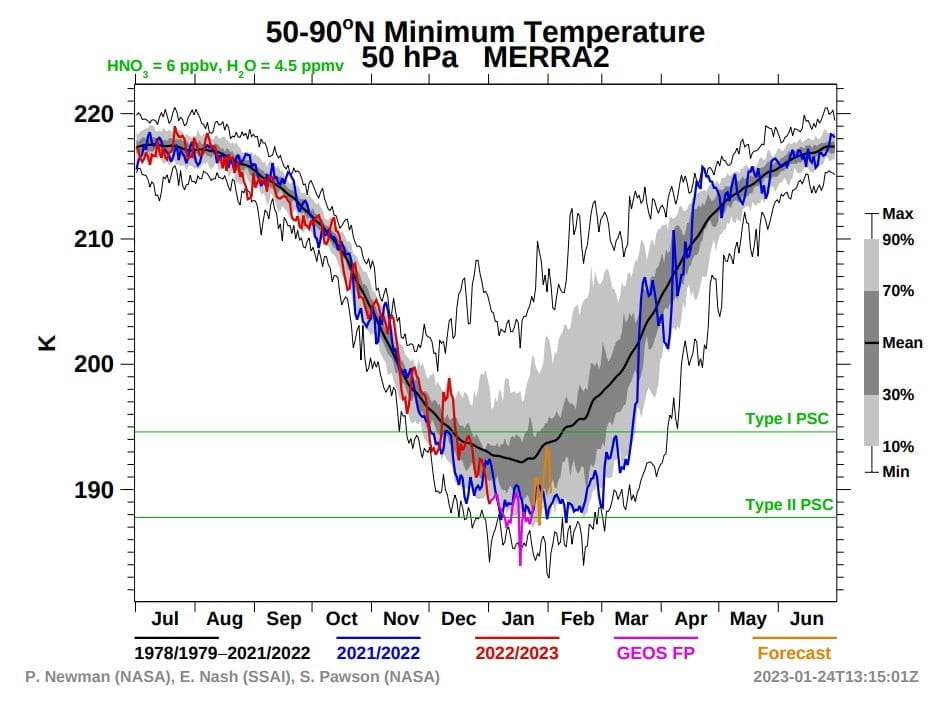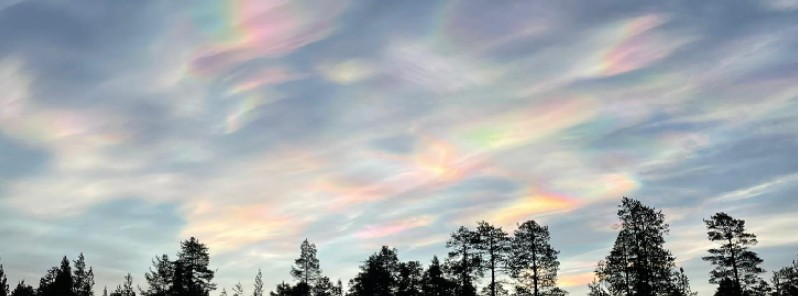A rare outbreak of polar stratospheric clouds (PSCs) is in progress around the North Pole. During a typical Arctic winter, PSCs are only visible two or three times.
Jónína Óskarsdóttir, a photographer based in Fáskrúðsfjörður, Iceland, was able to capture the display on camera today. She reports that the clouds have been visible for a couple of days and that Mt. Jökultindur was silhouetted by a sky full of nacreous color.1
Polar stratospheric clouds are a rare phenomenon as the stratosphere is typically very dry and cloud-free.
According to NASA models, temperatures in the Arctic stratosphere have dropped to the range required for the formation of very rare Type II PSCs.

Polar stratospheric clouds form in the stratosphere, which is the layer of the Earth’s atmosphere located above the troposphere, where weather occurs. The stratosphere is typically very dry, and normally there are no clouds at all. However, under certain conditions, PSCs can form.
PSCs form when temperatures in the Arctic stratosphere drop to extremely low levels, typically around -85 °C (-121 °F). At these temperatures, water molecules can begin to come together and form tiny ice crystals. These ice crystals are then illuminated by high-altitude sunlight, creating intense iridescent colors.
The formation of PSCs is dependent on a number of factors, including the presence of specific chemicals such as nitric acid and water vapor, as well as the temperature and wind patterns in the stratosphere. PSCs can also form when there is a strong influx of ozone-depleting substances into the stratosphere, which can lead to cooling and the formation of clouds.
1 Polar Stratospheric Clouds – Space Weather – January 24, 2023




